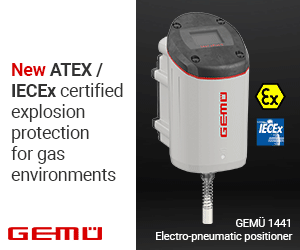PHOENICS- Your Gateway to CFD Success CHAM Case Study Simulation of a new CSO Chamber Design for the Water Industry
Concentration Heat And Momentum Limited (CHAM) is a leading software development and consulting company specialising in Computational Fluid Dynamics (CFD) techniques applied to industrial and environmental applications. Its primary product, PHOENICS, introduced in the early 1980’s, become the first commercially-available general-purpose CFD package available on the market. Its latest incarnation, PH-2018, is widely used by academia, researchers and commercial organisations for the mathematical modelling of all processes involving fluid flow, heat- and mass-transfer, chemical reaction and combustion.
Its use in the case study described below aided the design of a novel combined sewer overflow system developed by WRc – www.wrcplc.co.uk.
A combined sewer handles both sewage and rainwater runoff from streets. During storms, the sewer flow can be many times the dry-weather foul flow rate. This can cause flooding from the sewer network and problems at treatment plants, and so overflow arrangements are provided to divert excess sewer flows during storms into a river or other receiving waters. These relief structures are known as Combined Sewer Overflows (CSOs).
One problem with CSOs is that sewage debris and litter of various kinds washed into the drains by a storm can foul the discharge screen or be discharged from the CSO into the natural environment. Figure 1 shows a CSO spilling litter to a receiving water due to a blocked screen.

Figure 1: CSO spilling litter due to blocked screen
WRc plc (www.wrcplc.co.uk) has devised an innovative, non-powered CSO which is designed to reduce this form of pollution. A CSO typically works by having a chamber in which the water level rises in storm conditions until it reaches a high-level weir which provides the overflow.
In WRc’s patented design, the inflow into the CSO first passes through a primary (stilling) chamber where separation of litter (solid matter of low density) occurs. The litter passes over a low level weir in the primary chamber into a pipe which bypasses the spill chamber and rejoins the sewer downstream. The pass forward flow, free of litter, passes into the downstream (spill) chamber where, with the increase in surcharge of the system, discharge from the CSO via the screens. This arrangement prevents the litter from fouling the discharge screen or being released into the environment due to overtopping of blocked screens during storm responses.
Asset International has built a prototype CSO chamber to demonstrate the design principle that was exhibited at WRc’s 2015 Innovation Day (Figure 2).

Figure 2: Downstream end of pre-chamber
CHAM was invited by WRc to perform a CFD analysis of the filling and emptying process for the new CSO design, in order to provide proof of concept results for its operation. CHAM’s objective was to demonstrate that the CSO would separate successfully the bulk of the accumulated litter in the CSO primary chamber during filling and emptying of the chamber.
Earlier simulations using CHAM’s PHOENICS software had produced promising results. These concerned the design and testing of a steady-state CFD model of the innovative CSO during peak flow. The CFD model complied well with the design parameters and successfully demonstrated the separation of materials in the chamber at specified flow rates when the primary chamber low level weir was flooded. However, the model had not yet been applied to the transient (time-dependent) filling and emptying process encountered in a storm surge.
The objective of the new study, again sponsored by WRc, was to extend the earlier CFD model and capture these features including modelling filling and emptying. The purpose was to demonstrate the separation efficiency of the primary chamber and the bypass pipe in carrying away the unwanted litter material at various water levels; viz, when the weir in the primary chamber was (a) not operating, (b) spilling, and (c) flooded. The geometry of the double chamber CSO CFD model was constructed from drawings supplied by WRc.
The new CFD model was viewed as an aid to the pre-construction design process; it was able to predict how varying parameters such as the dimensions of the overflow chamber and the weir height would affect the efficiency of litter separation. The objective was to provide WRc with a generic modelling tool which could be used for analysing the design, and ultimately, to enable WRc to demonstrate to its clients that the new CSO chamber design will reduce both litter discharge to the environment and blinding of the CSO screen.
The most challenging aspect of the project was to determine a robust technical approach to handling the free water surface in the model. In the context of the CSO, it was clearly important that the rise and fall of the surface level could be handled. The methodology chosen to represent the three phases present in the system (water, litter and air) was the PHOENICS Algebraic Slip Model (ASM). This is based on the modelling assumption that there is a single continuous phase containing other dispersed components whose motion (slip velocity) relative to the continuous phase is given by an algebraic relationship involving local hydrodynamic variables.
Local volume fractions for each component (including the continuous phase) are then determined from individual conservation equations, with the constraint that the component fluxes across each cell face should be compatible with the corresponding mixture flux. This method allows for multiple phases to be computed and provides a way of describing the free-surface formed between the water and the air.
The time-varying inflow rate of water and litter into the domain, representative of a storm event, was described by a curve provided by WRc and input straightforwardly into PHOENICS using the “INFORM” (Input of FORMulae) feature. The proportion of litter introduced via the inlet varied in accordance with the inflow rate, ranging from an initial base rate of 5% by mass, escalating to 20% at peak inflow rate, and once again reducing thereafter. This curve was specified as a fill/empty cycle over the course of an hour.
A snapshot of the model, showing water surface levels after 1400s (23 minutes), is shown in Figure 3.

Figure 3: Iso-surface at 96% water after 1400s (23min), effectively showing surface level
In Figure 3, the green rectangle at the top on the left represents the open space above the discharge screen (represented by the purple rectangle). The small red rectangle below it is the water surface in the spill chamber. The large red area on the right is the water level at the bypass weir in the primary-chamber, which can be seen lapping over the weir; and the thin red area on the right is the flow in the bypass overflow channel beneath the weir.
The results were provided in the form of a table showing the proportions of the water and litter flowing into the CSO chamber that are (i) bypassed to the downstream sewer, and (ii) passed forward via the continuation pipe to the spill chamber; and also, the proportions of flow and litter discharged to the receiving water under varying circumstances.
The promising results obtained from the CFD models are being used by WRc in the design of a CSO that is to be trialled live shortly to confirm the CSO operates to expectations.
Concentration Heat and Momentum Limited, Bakery House, 40 High Street, Wimbledon, London SW19 5AU, UK
Telephone: 020 8947 7651 Fax: 020 8879 3497
E-mail: phoenics@cham.co.uk, Web site: http://www.cham.co.uk



























































































































